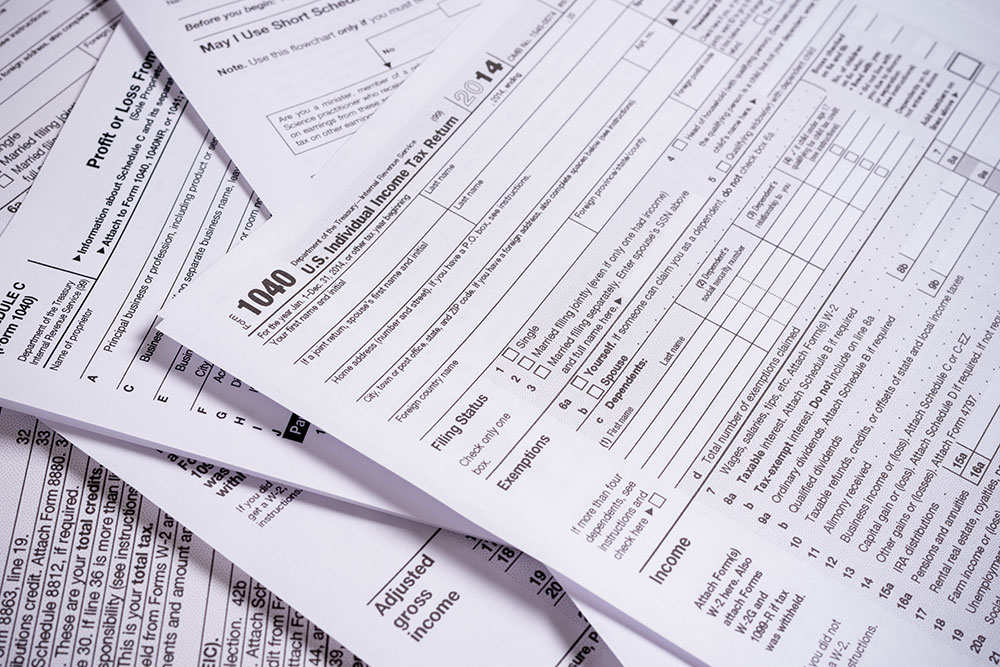14 Life Events That Warrant a Visit With Your CPA
August 29, 2019
Change is a constant part of life. With each change, adjustments have to be made. Certain changes in our lives puts us in a different tax category or changes how we need to file our taxes. Legally, we may come under different rules and requirements. There are tax advantages or credits that come with some of life's changes. Below are a few events that can take place in your life where you may need some professional guidance with the filing of your taxes.
Getting Married
As a single person, you filed your taxes as a single individual. Now that you are getting married, will it be cheaper to file a joint tax return or separate tax returns? One spouse may own a business or may quit their job. Are there children involved? A CPA can take all of your circumstances into account. Then they can help you set up your tax returns and finances for your best advantage.
Newborn Baby
The tax laws allow exemptions when you have a new baby. You will be able to take advantage of certain tax breaks. A CPA can help you understand which exemptions you qualify for and keep you up to date on current laws.
Adoption of a Child
When adopting a child, there are tax credit allowances available. An employer can offer financial assistance to help pay for the adoption, but tax-free assistance is limited. A CPA can educate you on what tax advantages are available for you given your circumstances and how much tax-free assistance you can receive. For example, both federal and state tax laws also allow for some benefits when prepaying for your child's college education.
Death of a Spouse
With the death of your spouse, there will be questions about inheritance taxes and social security benefits to be answered. How much, if any, will you owe in federal estate taxes or state death taxes? Do you qualify to receive any of your spouse's social security benefits? You may also need help in filing your spouse's income taxes for the amount of time they worked during the year.
Divorce
Many tax related situations will arise due to a divorce. Alimony, child support, splitting of assets and tax returns will all have to be handled. What about property taxes and how the transfer of property may be taxed? Professional guidance will make the process less confusing and easier to navigate.
Legal Separation
Similar to being divorced, being legally separated has its own tax implications. Should you still file jointly or should you file as a single taxpayer? What is required if the children are staying with you or if they are living with your spouse? Other than federal laws, what are the laws in the state in which you live?
When Paying and Receiving Child Support
Paying child support can be a burden on your income, but certain tax deductions may be allowed. Is the recipient of the child support required to pay income tax on the amount paid to them? A CPA can make sure you are filling out your taxes correctly.
Sudden Disability or Accident
If you have an accident and suddenly become disabled, you may have access to some type of disability insurance. Should you count your insurance payments as income? What part, if any, is taxable?
Diagnosis of Long-term Illness
Elderly people often face chronic health issues that may one day take their life. They look for ways and individuals to protect their financial interests. Sadly, many elderly people are victims of financial abuse. A trusted CPA can be a great partner to protect their financial interest and safeguard them from someone taking advantage of them.
Selling or Buying a House
If you itemize, many of the expenses of buying a home and paying a mortgage can be tax deductible. If you sell your home, the government requires you to pay capital gains tax. What is deductible and what amount you will have to pay capital gains tax on is what you and your CPA will have to figure out. In addition, energy-efficient upgrades or the installation of medical home improvements may qualify for tax credits.
Moving to a Different State
If you move to a different state, you will most likely have to fill out tax returns for each state. Income taxes are figured differently in each state. Some states do not require its citizens to pay income tax. Other states have flat rates or taxes are based on your income bracket.
Starting a Business
Depending on the type of business and how many employees you have, you must make sure your accounting practices comply with what the government requires. Certain expenses can be tax deductible and you will need a feasible procedure to keep up with them. In addition, personal and business expenses need to be kept separate. Business taxes are filed on a different form, for starters. Business losses could affect how much you have to pay on income from other sources. Business owners are also allowed to depreciate equipment and buildings that deducts from the taxes they owe. Also, if you work from home, or your home serves as the headquarters for your business, tax laws allow you certain deductions.
You Inherited a Large Amount of Cash or Property
Inheritance taxes can be very costly. Knowing the specifics can save you a lot of money. Making investments with the money could save on paying taxes for the present. Knowing how to categorize inherited property will help in using them as a tax deduction.
Retirement
Retiring changes your tax situation. Social security payments and pensions need to be counted as income. You will need to determine what tax bracket your total combined income puts you in. IRA regulations require a certain amount to be pulled out when you reach a particular age. Some IRA withdrawals are taxable. New tax laws for retirees may change how you fill out your taxes.
If any of the above events happen in your life, visiting a CPA can save you a lot of money and help you meet your new legal requirements. Your CPA will understand how your particular situation and circumstances may qualify you for certain tax breaks and advantages.









